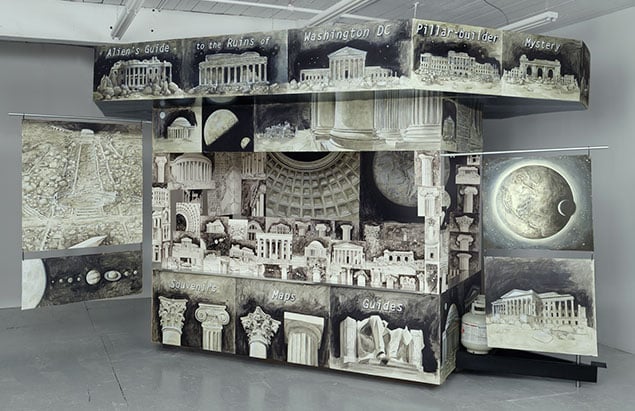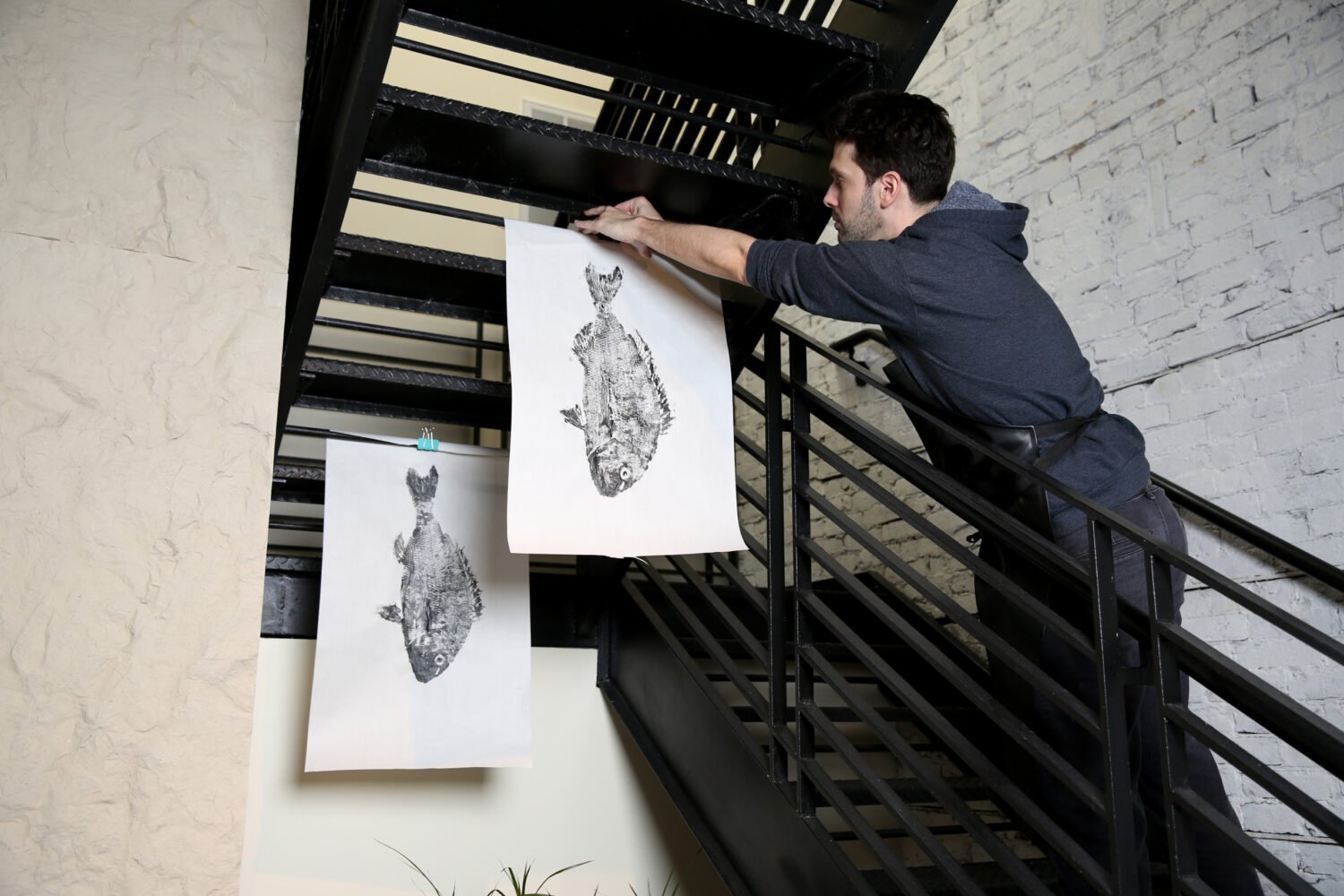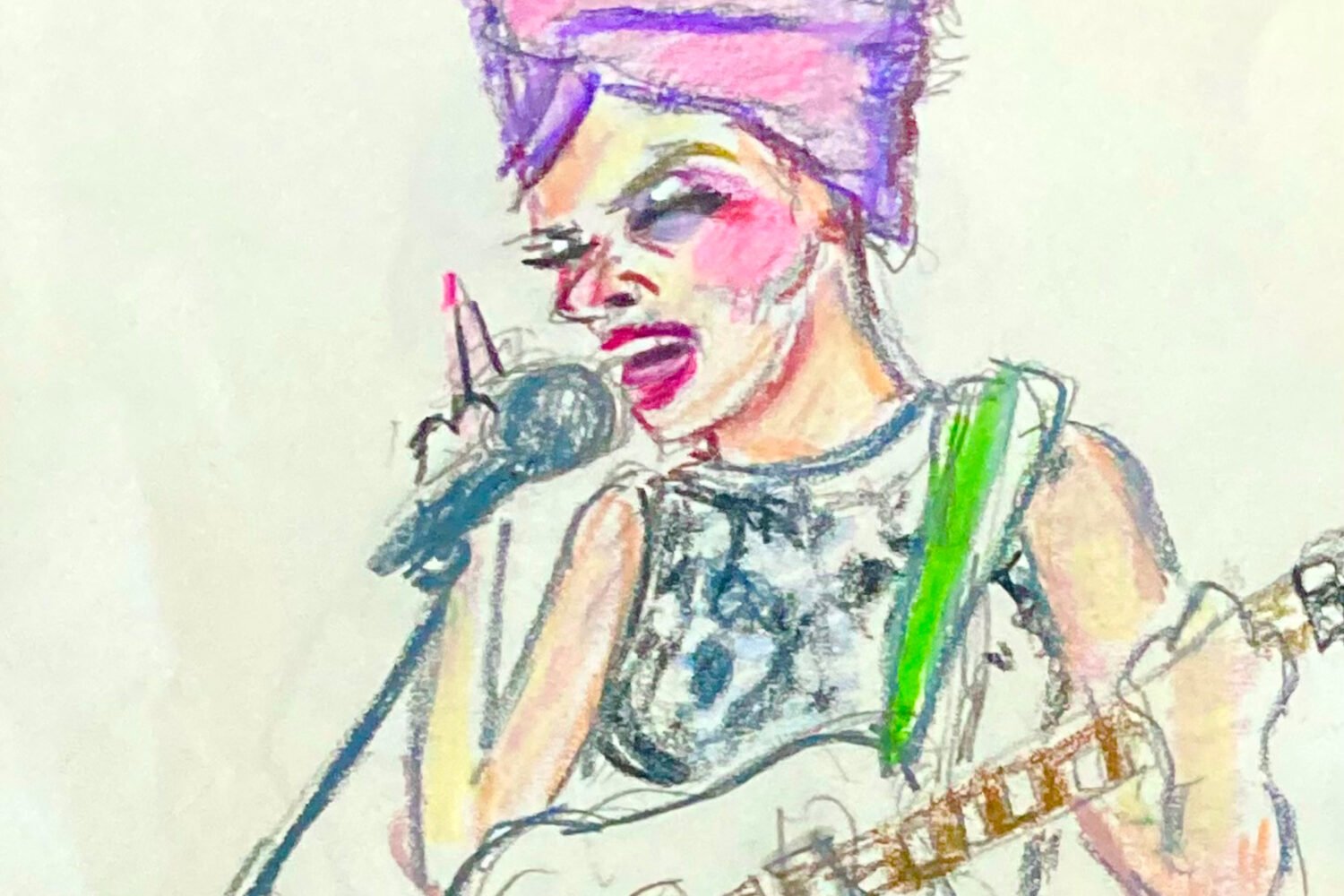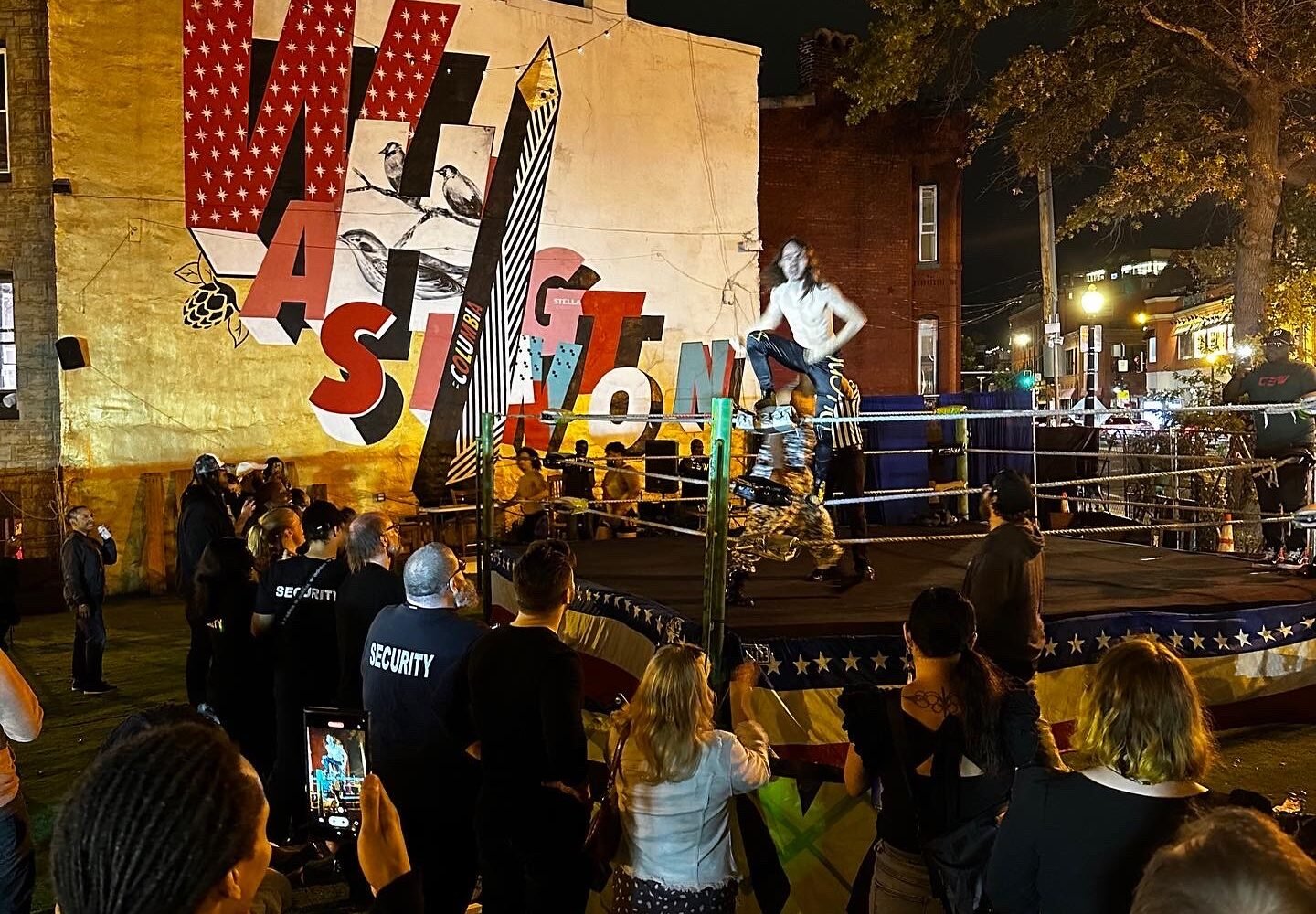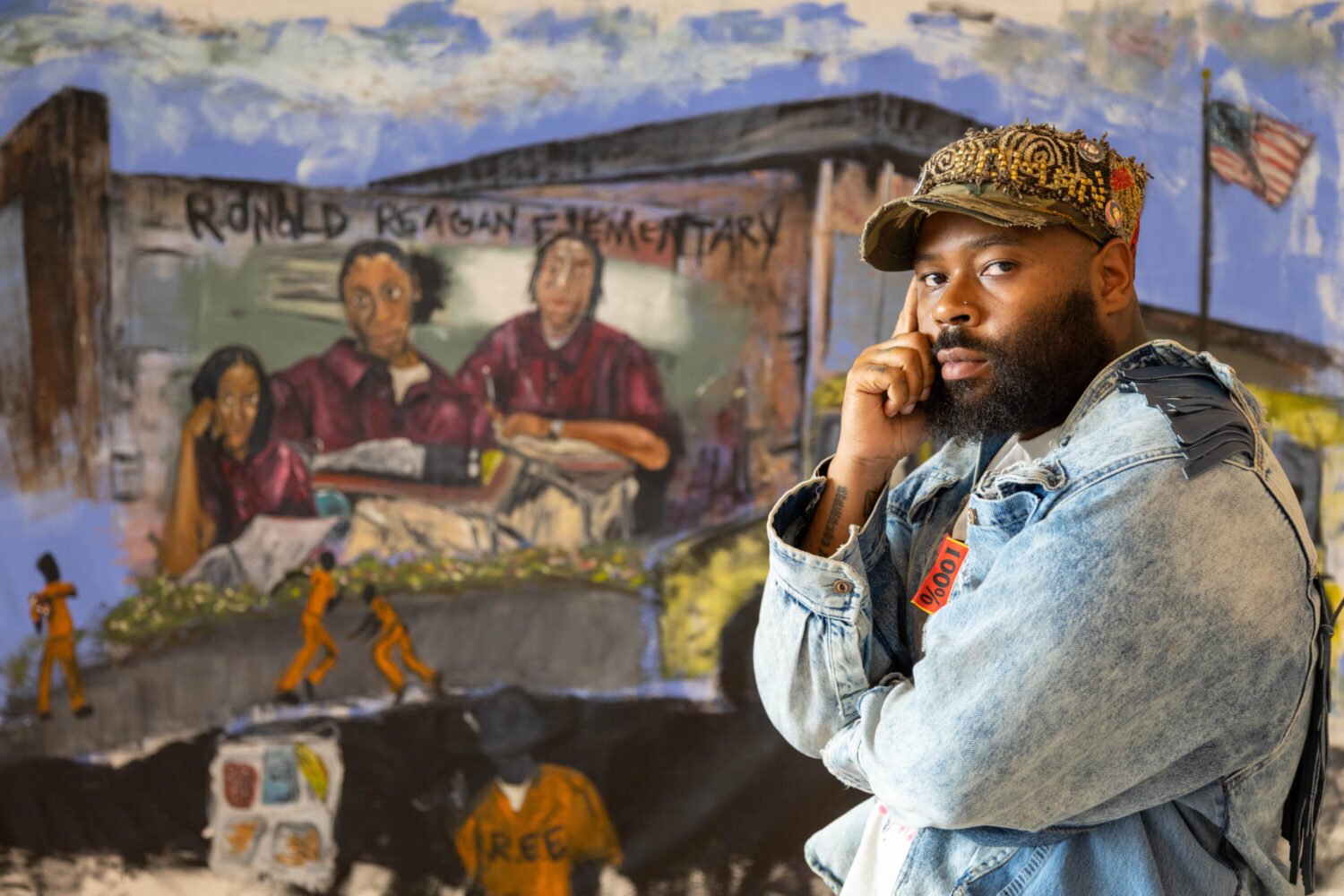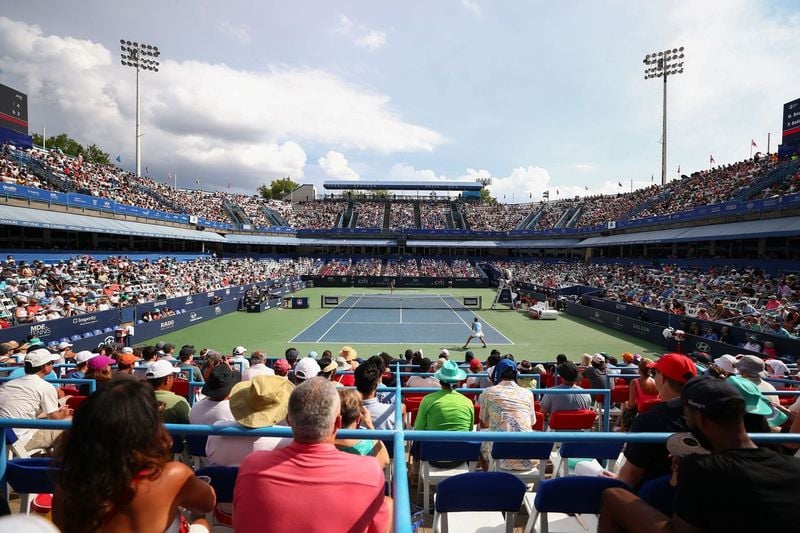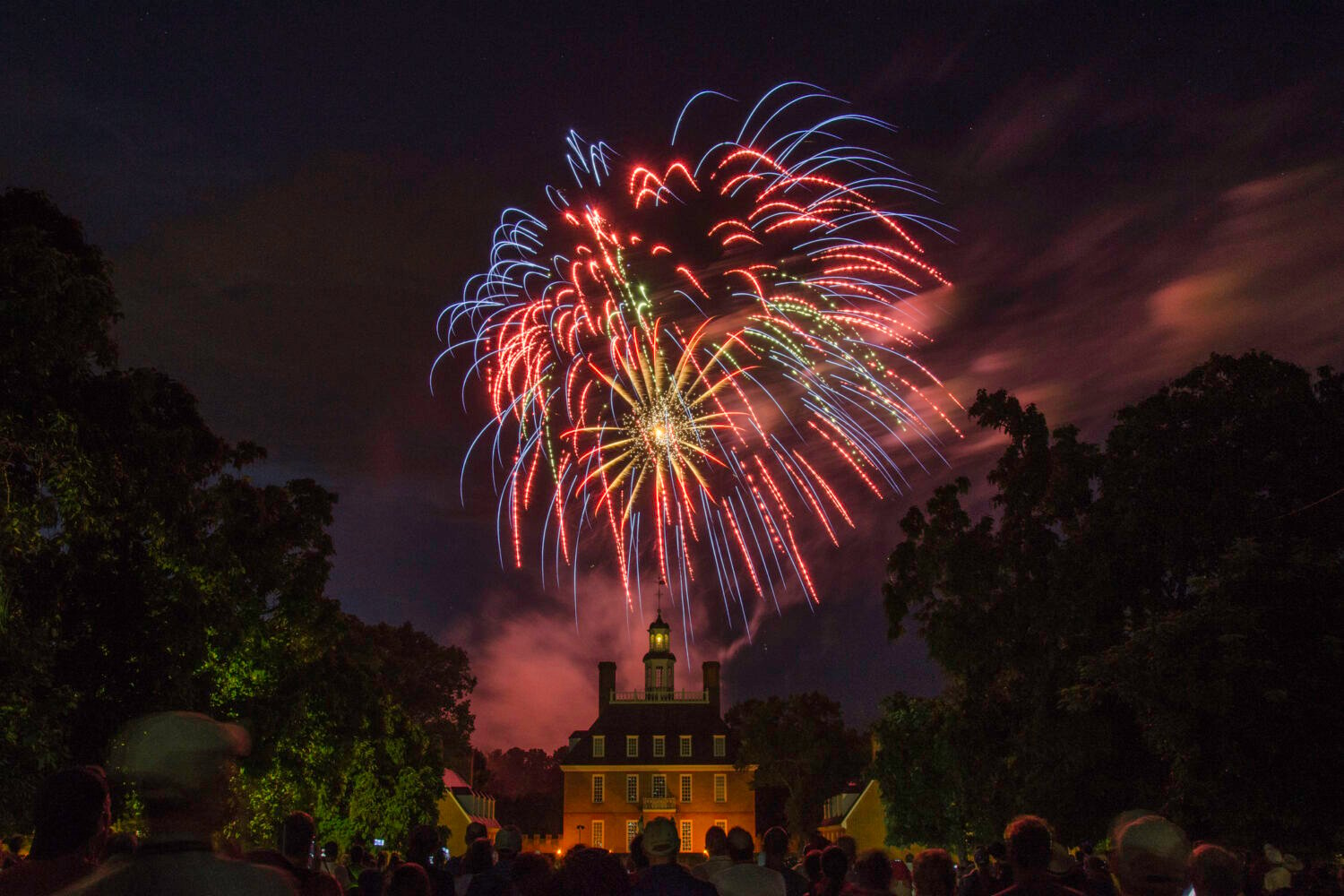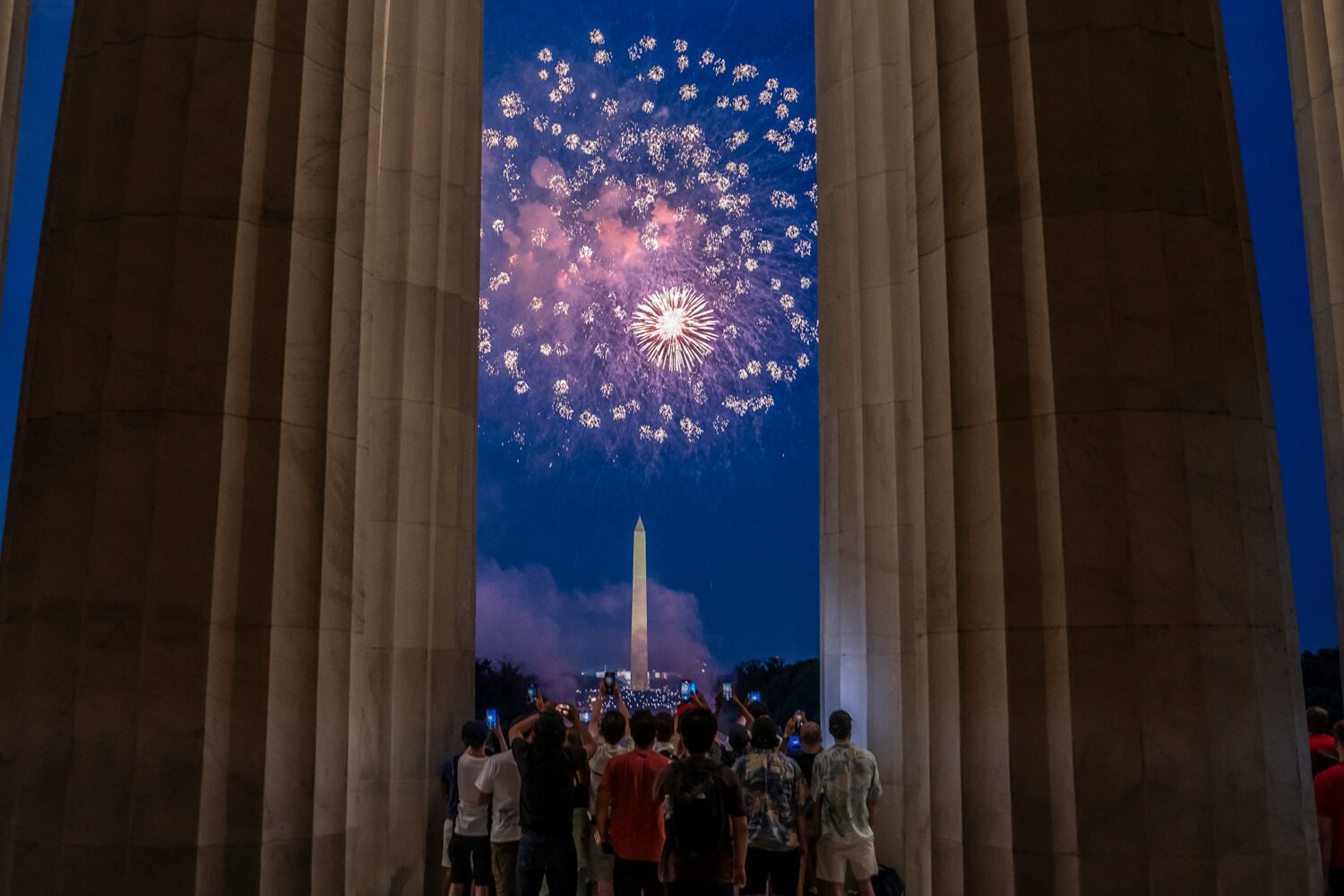Destroying Washington in the service of art is a device that seems irresistible to
filmmakers, never more so than in 2013, when not one but two lackluster movies with
budgets big enough to wipe out the Corcoran’s entire deficit have been released. The
fact that
Olympus Has Fallen and
White House Down are so spookily similar tells us rather a lot about audiences today: 1) They hate
Washington. 2) They love Washington in a way that makes its immolation both haunting
and oddly cathartic. And 3) there’s hardly anything more visually striking than classical
architecture in ruins. Just look at Rome, or Detroit.
“The Alien’s Guide to the Ruins of Washington DC”—the newest work by British-born,
Brooklyn-based artist
Ellen Harvey and the latest in the Corcoran’s contemporary NOW series—doesn’t destroy Washington
so much as revel in the magnificence of its desolation, but title aside, it’s much
less concerned with Washington specifically than it is with the architecture of power
in general. Harvey’s Washington exists in an imaginary future when humans have long
since snuffed it. And yet the inevitable tourists remain, this time in the form of
aliens who flock to earth in droves to try to understand the mysterious species that
lived there, and why it was so compelled to erect pillars, porticos, columns, and
colonnades everywhere it settled.
Harvey describes classical architecture as a “virus,” and nowhere is its proliferation
more blatant than upstairs in one of the Corcoran’s galleries, where she’s assembled
between 3,000 and 5,000 postcards of buildings around the world and displayed them
all on three vast walls, drawing links between them with hieroglyphic-esque symbols.
A collection of cards depicting the Parthenon in Athens, for example, hangs next to
postcards of the Parthenon in Nashville, a full-scale replica of the Greek version
constructed in 1897. There are ubiquitous domed state capitols and memorials and museums
and palaces and theaters and banks and basilicas, classified in a simplistic but meaningful
fashion (with lines and squiggles linking them together), and the scale of it all
is breathtaking.
Harvey is clearly baffled, in a good-natured way, by the cross-cultural dominance
of a single architectural form and its resilience over several thousand years of civilization.
Her aliens are baffled, too, and in an attempt to understand the “lost pillar-builders
of Earth” they misattribute motivations to humankind, which are printed on the Corcoran’s
walls in space-age-y text. Here, we can learn that our beliefs were grounded in “egalitarianism,
collaboration, and flirting,” and that our many, many cities on the water were constructed
as part of an ornate mating ritual involving swimming upstream. Befuddled by the different
sizes of Earth’s many ruins (imagine the DC War Memorial next to the US Capitol),
the aliens have also deduced that humans come in three sizes, a bit like socks.
Downstairs in the Corcoran’s atrium, which also confuses the aliens by having its
pillars on the inside of the building instead of the exterior, Harvey has constructed
a souvenir stand, modeled after Washington’s hot dog stands and featuring around 150
handpainted images of local ruins. It’s here that you start to realize quite how boring
the city is. Bereft of identifying elements or signage, the buildings all start to
blend together, from the Archives to the American Red Cross Building to the magnificently
stately Jewish Community Center. Yet the black-and-white images, hastily painted,
do more than just provide an apocalyptic glimpse of a desolate, barren,
unoriginal city. If this is art, Harvey seems to be asking, then what about the gaudy pictures
of half-smokes all over the Mall?
Bringing the outside in, and questioning what defines art in a quirky, unselfconscious
way, is characteristic of Harvey, who made a name for herself painting tiny landscapes
illegally in graffiti hotspots in “The New York Beautification Project” from 1999
to 2001 before copying every single work in a Whitney Museum catalog in “A Whitney
for the Whitney” in 2003. In 2005 she made a video projection depicting the Pennsylvania
Academy of Fine Art as a ruin, and in 2010 she hung hand-copied nude paintings from
the Bass Museum’s collection next to images from porn magazines.
In Harvey’s world, the aliens understand humanity much as people understand art: They
interpret what most makes sense to them. The “pillar-builder archive” of postcards,
preserved in a time capsule, is presumably as hard to explain for them as it is for
us, given such damning evidence of banality. The aliens even mimic the style themselves,
building a spaceship in the Corcoran’s rotunda that’s modeled after an obelisk. The
aspirational nature of it all—that you can build your way to greatness via this bizarrely
dominant form of architecture—is distinctly unnerving. These alien archaeologists,
daffy as they are, have been infected with the virus, too, and their ultimate downfall
may now be as inevitable as ours.
“Ellen Harvey: The Alien’s Guide to Washington, DC” is at the Corcoran Gallery of
Art through October 6. For more information, visit the Corcoran’s website.

